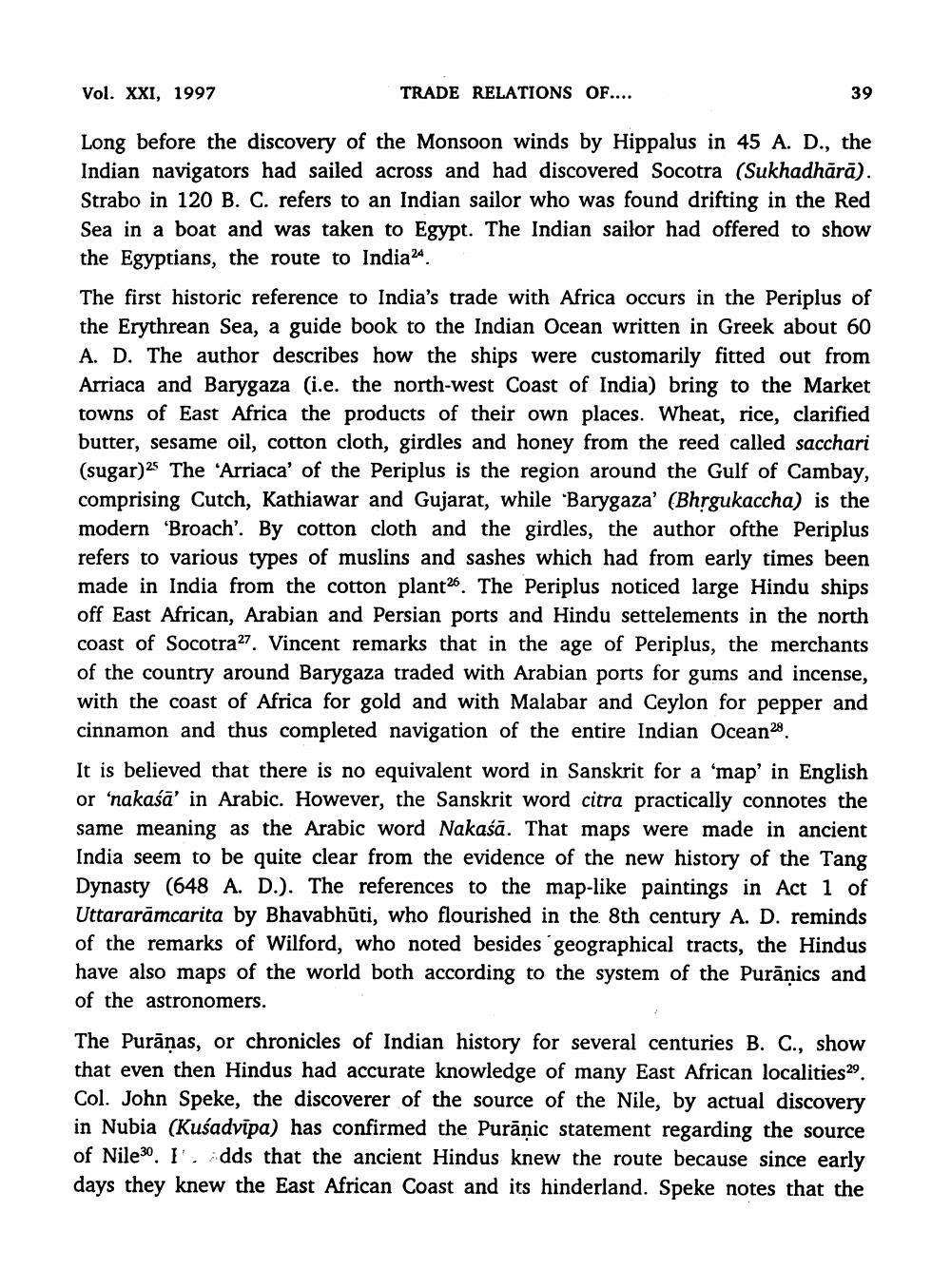________________
Vol. XXI, 1997
TRADE RELATIONS OF....
39
Long before the discovery of the Monsoon winds by Hippalus in 45 A. D., the Indian navigators had sailed across and had discovered Socotra (Sukhadhārā). Strabo in 120 B. C. refers to an Indian sailor who was found drifting in the Red Sea in a boat and was taken to Egypt. The Indian sailor had offered to show the Egyptians, the route to India24. The first historic reference to India's trade with Africa occurs in the Periplus of the Erythrean Sea, a guide book to the Indian Ocean written in Greek about 60 A. D. The author describes how the ships were customarily fitted out from Arriaca and Barygaza (i.e. the north-west Coast of India) bring to the Market towns of East Africa the products of their own places. Wheat, rice, clarified butter, sesame oil, cotton cloth, girdles and honey from the reed called sacchari (sugar)25 The 'Arriaca' of the Periplus is the region around the Gulf of Cambay, comprising Cutch, Kathiawar and Gujarat, while 'Barygaza' (Bhrgukaccha) is the modern 'Broach'. By cotton cloth and the girdles, the author ofthe Periplus refers to various types of muslins and sashes which had from early times been made in India from the cotton plant26. The Periplus noticed large Hindu ships off East African, Arabian and Persian ports and Hindu settelements in the north coast of Socotra27. Vincent remarks that in the age of Periplus, the merchants of the country around Barygaza traded with Arabian ports for gums and incense, with the coast of Africa for gold and with Malabar and Ceylon for pepper and cinnamon and thus completed navigation of the entire Indian Ocean28.
It is believed that there is no equivalent word in Sanskrit for a 'map' in English or 'nakaśā' in Arabic. However, the Sanskrit word citra practically connotes the same meaning as the Arabic word Nakaśā. That maps were made in ancient India seem to be quite clear from the evidence of the new history of the Tang Dynasty (648 A. D.). The references to the map-like paintings in Act 1 of Uttararāmcarita by Bhavabhūti, who flourished in the 8th century A. D. reminds of the remarks of Wilford, who noted besides geographical tracts, the Hindus have also maps of the world both according to the system of the Purānics and of the astronomers.
The Purānas, or chronicles of Indian history for several centuries B. C., show that even then Hindus had accurate knowledge of many East African localities 29 Col. John Speke, the discoverer of the source of the Nile, by actual discovery in Nubia (Kusadvipa) has confirmed the Purānic statement regarding the source of Nile30. I'. dds that the ancient Hindus knew the route because since early days they knew the East African Coast and its hinderland. Speke notes that the




